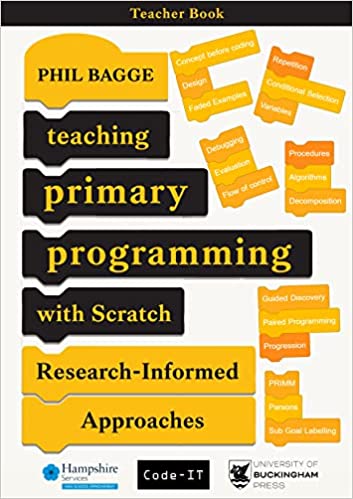A Phil Bagge book review, by Phil Wickins!
Phil Bagge is one of the most enthusiastic people I’ve ever met. His passion for teaching and learning shines through everything he does, as does his vast experience of computing in education. His new book, ’Teaching Primary Programming with Scratch’ is absolutely packed full of explanations, tools, subject knowledge, pupil examples, project ideas, pedagogy, you name it!

Phil takes us on a journey from the most basic right through to the more advanced concepts, explaining and giving real school examples as he goes. You can study the book from cover to cover, vastly improving your expertise, however what Phil has cleverly done is design sections for teachers to dip in and out of depending on their need and confidence. Being a more experienced teacher, I found the pedagogy section particularly insightful, with new methods and ideas to try with my pupils. Whereas my colleague who is relatively new to computing explored the ‘concept before code’ section and has since been surprised at how this has revolutionised her teaching practice.
Phil anchors his content, examples and explanations with strong concepts such as algorithms throughout the book, demonstrating how to take abstract code back to first principles to aid understanding. This enables a greater transfer of skills so that even though the book focuses on the Scratch programming environment; the application of concepts within other programming languages would be quicker to grasp. This book could serve as a computing dictionary, glossary, companion, encyclopaedia, idea generator, lesson planner guide, inspiration; it is so versatile and you would do well grab yourself a copy to have in your toolkit, whatever stage of teaching computing you are at!
Buy it here: Teaching Primary Programming with Scratch Teacher Book: Research-Informed Approaches





